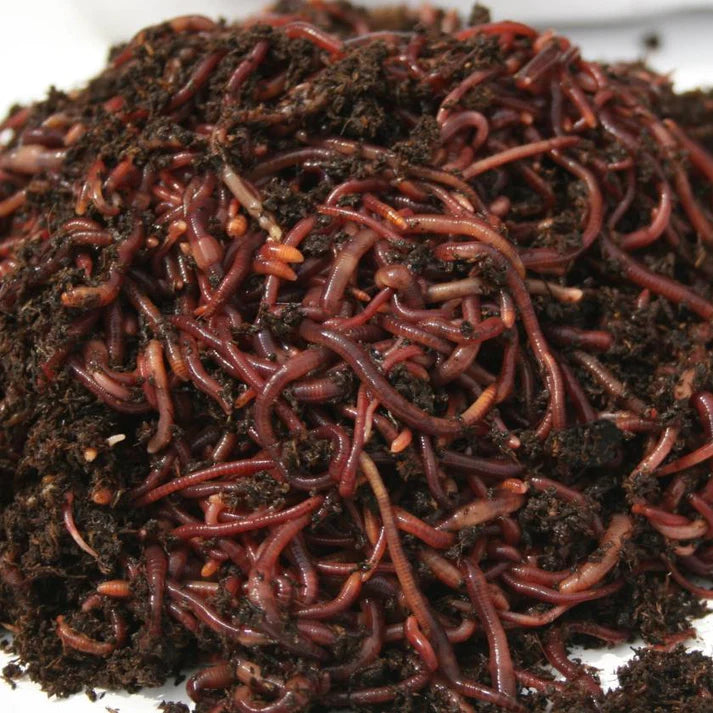Red Wiggler Express - The Facts
Red Wiggler Express - The Facts
Blog Article
All About Red Wiggler Express
Table of ContentsThe Best Guide To Red Wiggler ExpressThe Facts About Red Wiggler Express RevealedThe Single Strategy To Use For Red Wiggler ExpressFacts About Red Wiggler Express RevealedThe Main Principles Of Red Wiggler Express
And the prospering Red Worm population? Even in the stack that was established up directly in front of yard composters with existing Red Worm nests.
Several varieties, consisting of Red Wigglers, European Nightcrawlers, and Lumbricus species were brought over from the European continent. Below's the thingNative or not - and as skilled as they are at being able to survive in a wide-range of atmospheres and conditions -. Simply put, they are much more likely to hang around in any kind of energetic composting systems you have established, than they are to wander off and start wrecking the setting.
Roots require oxygen for respiration and depend on smooth airflow within the soil to grow. Nonetheless, when it rainfalls, soil can become saturated with water, reducing the oxygen offered and impeding nutrition absorption - Where To Buy Worms. To preserve an optimal balance, the soil needs to enable water to drain pipes adequately, leaving adequate space for air to sustain root health
Red Wiggler Express Things To Know Before You Get This

When it involves worms for composting, what comes to mind? If you were an earthworm dog breeder, dealership, or simple garden enthusiast, then you 'd recognize that red wiggler worms are the suitable worms for vermicomposting. To get more information concerning these planet wonders, checked out some of the red worm realities below.
(https://www.storeboard.com/redwigglerexpress1)But if they stretch their bodies, you'll have the ability to see the stripes on their skin. When raising worms such as red wiggler worms, you must have the ability to know just how to profit them. When you have the ability to maintain and take care of their environment well, and also feed them the right kinds of natural wastes, then they'll be able to create nutrient-packed and quality-rich worm castings for you (also called worm poop or compost).
Unknown Facts About Red Wiggler Express
What do worms consume? Well, these red wriggler worms can be fed with cooking area scraps and garden wastes.

This behavior makes them appropriate forever in worm bins, compost piles, and other confined spaces where organic waste is plentiful. Producing an optimum atmosphere for red wigglers calls for a thoughtful strategy. Think about the following necessary components to take care of red wigglers at home and ensure their wellness: Make use of a bedding of shredded newspaper or cardboard.

Red wiggler worms recreate by laying small, lemon-shaped eggs in safety cocoons. These cocoons are usually transferred in the bed linens and hatch right into child worms within a few weeks.
What Does Red Wiggler Express Do?
Their flexibility and resilience have made them a preferred choice for vermicomposting in different regions all over the world. Yes! They can survive from a series of 32F to 90F. They are very versatile animals. Take into consideration protective steps for very severe temperature levels such as: Protecting the worm container with layers of straw or leaves.

When caring for your red wigglers it is very important to keep in mind to: 1) K.I.S.S (Maintain it Simple) and 2) every little thing in moderation. These regulations relate to feeding your compost worms, sprinkling your worm containers, and nearly whatever else involved in caring for them. Simply keep in mind - you can constantly include more food later (but it's tough to remove feed once it's been contributed to a bin!).
Since I fed the red wigglers and garden compost worms way too much, they weren't able to keep up and over time the older food went leftover and produced anaerobic problems that eliminated the worms. Fortunately is that there are really straightforward activities you can take to guarantee this doesn't occur! Here're the 6 golden rules for exactly how typically and just how much to feed your worms: Guideline # 1: Moderation! You can constantly include more food later on.
Not known Facts About Red Wiggler Express
Leftover food will certainly cause anaerobic conditions that will certainly eliminate your online worms. It is ok to spray a little of their initial bed linen (which should currently remain in the container) over the food, but the food needs to never ever be buried and need to be noticeable to your eye. Guideline # 5: See rule # 1! Policy # 6: After the first feeding, feed the worms 1/3 to 1/2 of their weight.
Report this page